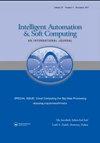基于双峰稀疏自编码器的短周期生理信号情感识别
IF 2
4区 计算机科学
Q2 Computer Science
引用次数: 3
摘要
随着人机交互和人工智能技术的发展,情感识别受到了广泛的关注。最常用的情绪识别技术是脑电图,脑电图与中枢神经系统直接相关,具有强烈的情绪特征。然而,使用脑电图信号也有一些缺点。它们需要高维数、多样化和复杂的处理过程,这给实时计算带来了困难。此外,由于身体运动或实验者注意力不集中,数据的获取和解释也会出现问题。在本文中,我们使用光电体积脉搏图(PPG)和肌电图(EMG)来记录信号。首先,在预处理过程中将情绪数据分割为10个脉冲,以识别短周期信号的情绪;这些分割后的数据被输入到所提出的双峰堆叠稀疏自编码器模型中。为了提高识别性能,我们采用了双峰结构来提取共享的PPG和EMG表示。与目前的高低二元分类相比,该方法提供了更详细的唤醒价映射。我们创建了一个PPG和EMG信号的数据集,称为情绪数据集,分为四类,以帮助理解情绪水平。尽管有更多的类别分类,我们在唤起和效价方面的表现分别为80.18%和75.86%。实验结果表明,该方法显著提高了情绪识别性能。本文章由计算机程序翻译,如有差异,请以英文原文为准。
Emotion Recognition with Short-Period Physiological Signals Using Bimodal Sparse Autoencoders
With the advancement of human-computer interaction and artificial intelligence, emotion recognition has received significant research attention. The most commonly used technique for emotion recognition is EEG, which is directly associated with the central nervous system and contains strong emotional features. However, there are some disadvantages to using EEG signals. They require high dimensionality, diverse and complex processing procedures which make real-time computation difficult. In addition, there are problems in data acquisition and interpretation due to body movement or reduced concentration of the experimenter. In this paper, we used photoplethysmography (PPG) and electromyography (EMG) to record signals. Firstly, we segmented the emotion data into 10-pulses during preprocessing to identify emotions with short period signals. These segmented data were input to the proposed bimodal stacked sparse auto-encoder model. To enhance recognition performance, we adopted a bimodal structure to extract shared PPG and EMG representations. This approach provided more detailed arousal-valence mapping compared with the current high/low binary classification. We created a dataset of PPG and EMG signals, called the emotion dataset dividing into four classes to help understand emotion levels. We achieved high performance of 80.18% and 75.86% for arousal and valence, respectively, despite more class classification. Experimental results validated that the proposed method significantly enhanced emotion recognition performance.
求助全文
通过发布文献求助,成功后即可免费获取论文全文。
去求助
来源期刊

Intelligent Automation and Soft Computing
工程技术-计算机:人工智能
CiteScore
3.50
自引率
10.00%
发文量
429
审稿时长
10.8 months
期刊介绍:
An International Journal seeks to provide a common forum for the dissemination of accurate results about the world of intelligent automation, artificial intelligence, computer science, control, intelligent data science, modeling and systems engineering. It is intended that the articles published in the journal will encompass both the short and the long term effects of soft computing and other related fields such as robotics, control, computer, vision, speech recognition, pattern recognition, data mining, big data, data analytics, machine intelligence, cyber security and deep learning. It further hopes it will address the existing and emerging relationships between automation, systems engineering, system of systems engineering and soft computing. The journal will publish original and survey papers on artificial intelligence, intelligent automation and computer engineering with an emphasis on current and potential applications of soft computing. It will have a broad interest in all engineering disciplines, computer science, and related technological fields such as medicine, biology operations research, technology management, agriculture and information technology.
 求助内容:
求助内容: 应助结果提醒方式:
应助结果提醒方式:


